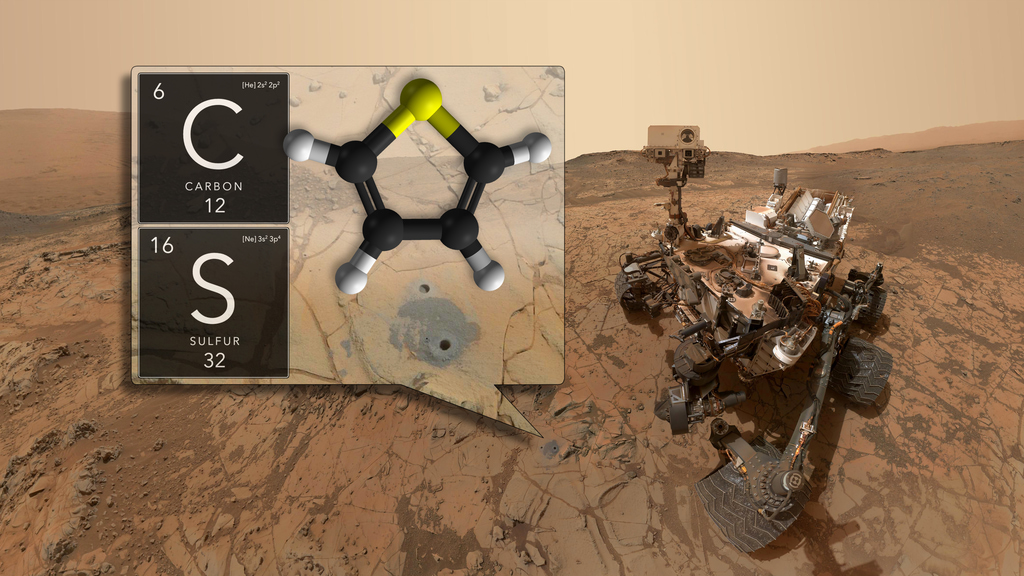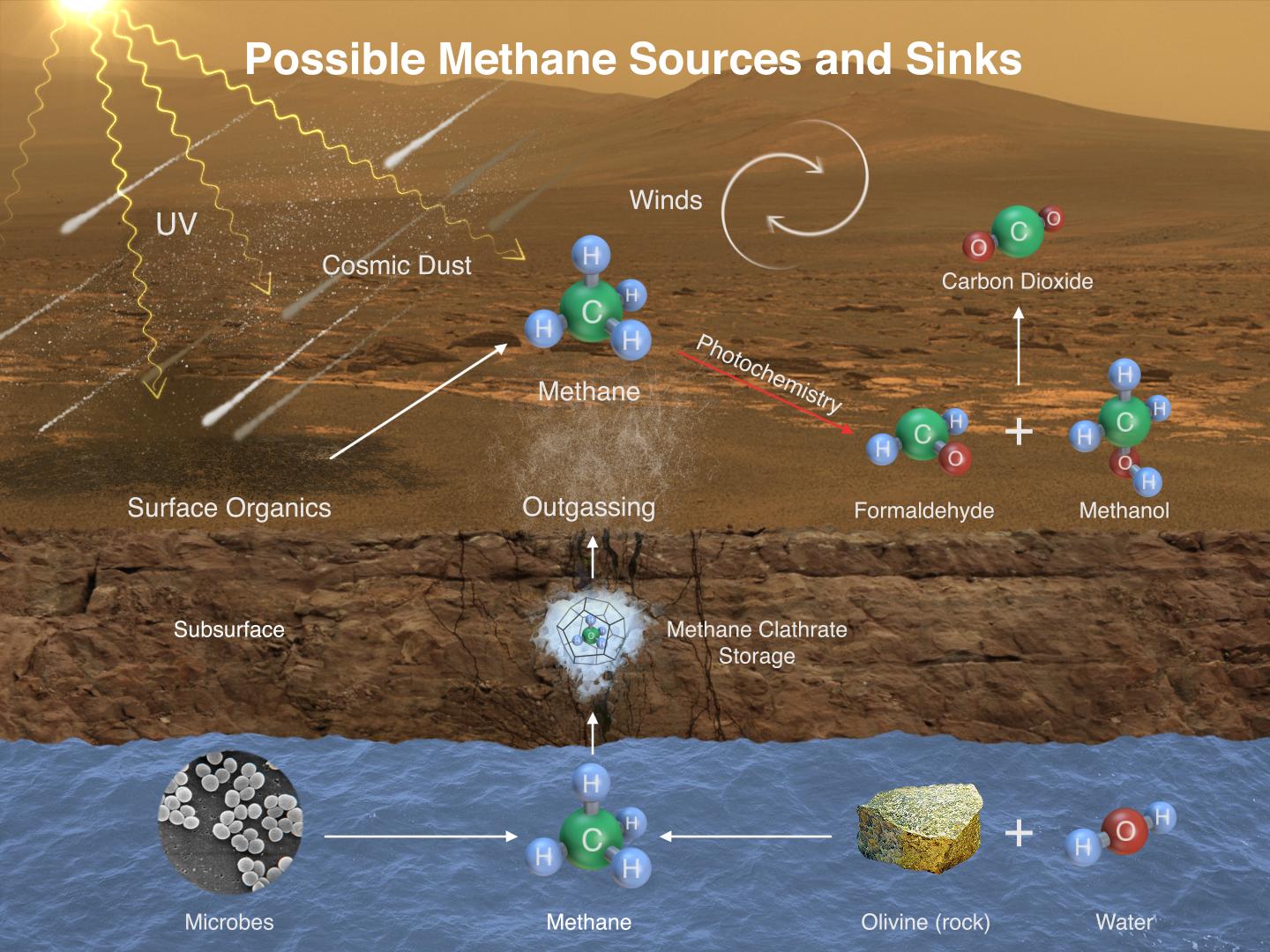Methane Plume on Mars
The first definitive detection of methane in the atmosphere of Mars indicates the planet is alive in the sense that it still has geologic activity powered by heat from its interior, according to a team of NASA and university scientists.
The team used spectrometer instruments attached to several telescopes to detect plumes of methane that were emitted from specific sites during the warmer seasons - spring and summer.
Though nothing conclusive can yet be determined, it is possible that the detected methane was either produced by geologic processes such as the oxidation of iron (serpentinization) or by microscopic Martian life below the planet's surface. The methane released today could be produced currently, or it could be ancient methane trapped in ice 'cages' called clathrates or as gas below a sub-surface ice layer.
Visualization of a methane plume found in Mars' atmosphere during the northern summer season.

Color bar
For More Information
Credits
Please give credit for this item to:
NASA/Goddard Space Flight Center Scientific Visualization Studio
-
Animator
- Trent L. Schindler (UMBC)
-
Producers
- Chris Smith (UMBC)
- Andrew Freeberg (NASA/GSFC)
-
Scientist
- Michael Mumma (NASA/GSFC)
Release date
This page was originally published on Thursday, January 15, 2009.
This page was last updated on Wednesday, May 3, 2023 at 1:54 PM EDT.

